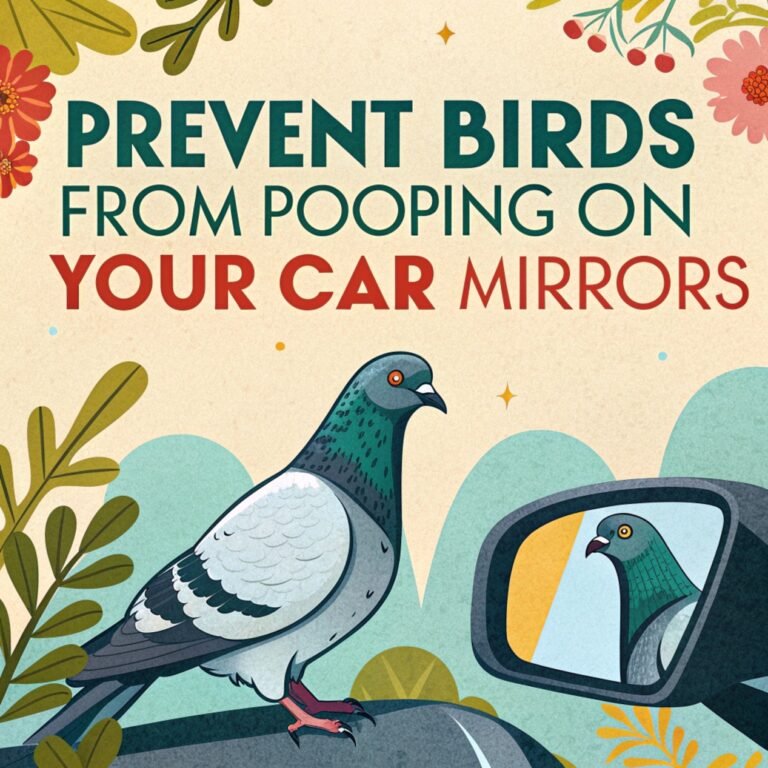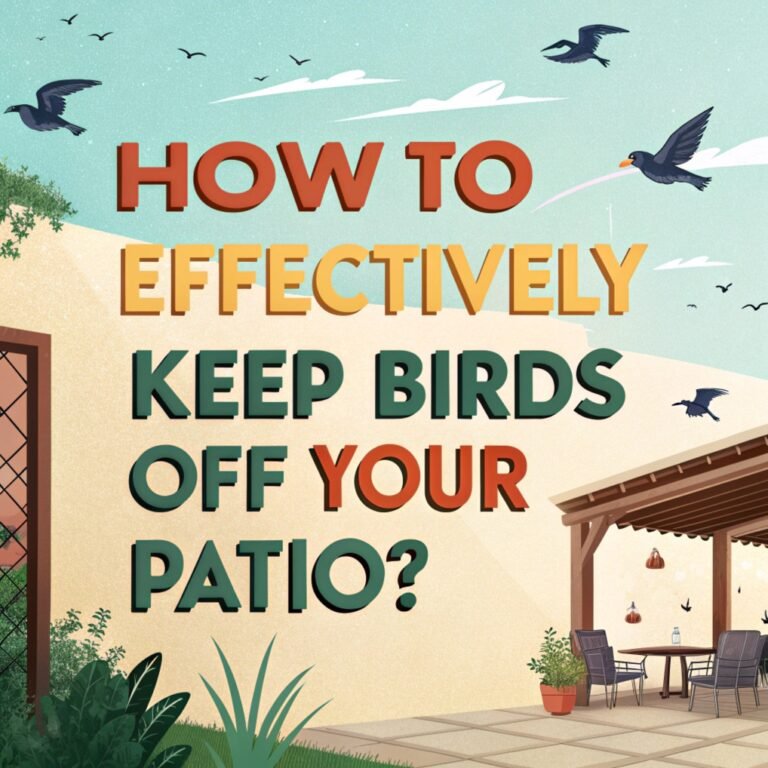How to Prevent Starlings and Blackbirds From Accessing Bird Feeders
To keep starlings and blackbirds away from your bird feeders, first understand their feeding habits. Choose feeders designed for smaller birds. Select seeds that appeal to your desired species while avoiding those liked by starlings and blackbirds. Implement practical strategies to make your feeders more inviting for the birds you want to attract. Here are some effective methods to ensure your feeder is a welcoming spot for smaller birds:
- Use Specific Feeder Types: Install feeders that are designed for smaller birds, such as tube feeders with smaller openings.
- Select Appropriate Seeds: Opt for seeds that starlings and blackbirds dislike, such as safflower or nyjer seeds.
- Limit Access: Use barriers or guards on your feeders to prevent larger birds from reaching the food.
- Avoid Spillage: Ensure your feeders do not spill seeds on the ground, which can attract unwanted birds.
- Feed at Specific Times: Schedule feeding times when larger birds are less likely to be active, allowing smaller birds to feed without competition.
By following these steps, you can successfully attract the birds you enjoy while keeping starlings and blackbirds away.
Key Takeaways
- Choose tube feeders with narrow entrances to limit access for larger birds like starlings and blackbirds.
- Use dome-shaped feeders to create landing barriers, making it difficult for unwanted species to access the food.
- Opt for seed types such as safflower and nyjer that starlings and blackbirds typically avoid.
- Implement weight-sensitive feeders that close when heavier birds land, ensuring only smaller birds can feed.
- Position feeders 5 to 6 feet off the ground near natural cover to deter larger birds and encourage smaller species.
Choose the Right Feeder Design

Choosing the right feeder design helps keep starlings and blackbirds away. Focus on feeders that attract smaller birds. Tube feeders with narrow entrances work well, as they limit access for larger birds while allowing your favorites to feed.
Dome-shaped feeders also create barriers that prevent starlings from landing. Additionally, weight-activated feeders can close when heavier birds land on them.
The goal is to create a friendly space for the birds you enjoy, while keeping away those that cause trouble. With the right feeder design, you can welcome delightful visitors to your backyard.
Use Feeders With Specific Seed Types
To deter starlings and blackbirds, use feeders with seeds they avoid.
Choose seeds that attract your favorite birds, like finches and chickadees. Sunflower hearts, safflower seeds, and nyjer seeds appeal to smaller birds and are less tempting to starlings.
Adding dried fruit or mealworms can also attract the right species.
By selecting specific seeds, you create a welcoming space for birds you enjoy while keeping unwanted visitors away.
This approach helps you build a lively backyard bird community tailored to your preferences.
Opt for Squirrel-Proof Feeders

Squirrels can be entertaining, but they often scare away birds from your feeders. To keep squirrels away, choose squirrel-proof feeders.
Look for feeders with weight-sensitive perches that close off access when squirrels try to land. Sturdy materials, such as metal or heavy-duty plastic, resist squirrel chewing.
Consider designs with bafflers or cages that challenge squirrels while allowing small birds easy access. With these feeders, you create a welcoming space for your birds while reducing squirrel interference.
Your feathered friends will enjoy a peaceful dining experience!
Implement Feeding Station Height Guidelines
After installing squirrel-proof feeders, consider the height for attracting birds while keeping starlings and blackbirds away.
Place feeders 5 to 6 feet high. This height helps smaller birds feel safe while feeding. If larger birds take over, adjust the height to make feeders less accessible to them.
Position feeders near natural cover, such as trees or shrubs, to provide shelter for smaller birds.
Following these guidelines will improve your birdwatching experience and create a welcoming environment for your feathered friends. Enjoy observing the diverse species that visit your feeders!
Create Barrier Solutions

Creating effective barriers is important to keep starlings and blackbirds away from your feeders. Here are some simple methods to protect your bird food while still attracting smaller birds:
- Install wire mesh or bird netting around feeders to block larger birds.
- Use a squirrel-proof feeder that allows smaller birds to feed safely.
- Hang feeders from poles with baffles to prevent larger birds from accessing them.
- Place your feeders near natural cover that smaller birds like.
- Build an elevated feeding platform that's difficult for starlings and blackbirds to reach.
These strategies can help you enjoy watching your favorite birds without the interference of those larger species.
Offer Food During Off-Peak Hours
To attract small birds and reduce visits from starlings and blackbirds, feed them during off-peak hours.
Observe bird activity to find out when larger birds are less active, often early in the morning or late in the evening.
By feeding at these times, you create a calm space that appeals to smaller birds. This approach allows them to access food without competition from aggressive feeders.
You'll enjoy a variety of bird visitors while fostering a peaceful bird-watching environment. This simple method makes your outdoor area more welcoming for all kinds of birds.
Monitor and Adjust Food Accessibility
Monitor and adjust food accessibility to attract the birds you want to your feeders.
To keep starlings and blackbirds away, regularly check your food placement and feeder upkeep. Here are some clear tips:
- Place feeders at different heights to keep larger birds from accessing them.
- Use feeders that limit entry for bigger birds.
- Adjust food amounts based on how much the birds eat.
- Clean feeders often to keep food fresh and avoid spoilage.
- Choose a seed mix that your favorite backyard birds enjoy.
Explore Alternative Feeding Techniques
Explore Alternative Feeding Techniques
To attract birds and deter starlings and blackbirds, try different feeding methods. Place seeds directly on the ground or use platform feeders. These options help smaller birds access food while making it tougher for larger birds to reach.
Varying the types of seeds can also attract your favorite birds. Use small seeds for finches and larger ones for woodpeckers. This strategy can help keep unwanted birds away.
Creating a bird-friendly garden with native plants can provide natural food sources. This makes it harder for starlings and blackbirds to find food.
Frequently Asked Questions
What Are the Best Bird Species to Attract With Selective Feeders?
To attract colorful birds, use finch feeders filled with nyjer seeds to draw in goldfinches. Also, set up hummingbird feeders with sugar water to invite hummingbirds. These simple steps will create a lively backyard that welcomes these beautiful birds. Enjoy watching them come to visit!
Do Certain Colors or Shapes Deter Starlings and Blackbirds?
Certain colors and shapes can help you keep starlings and blackbirds away. Use colors like orange or yellow, which are less appealing to these birds. Choose tubular shapes to make feeding spaces that attract only the birds you want. This method can improve your chances of having a bird-friendly environment.
How Do Weather Conditions Affect Bird Feeder Accessibility?
Weather affects bird feeder access. Rain, snow, and strong winds can make it harder for birds to feed. In contrast, warmer weather encourages more visits. Place your feeder in a sheltered spot to help birds access it during harsh weather. Adjusting feeder placement can improve bird visits year-round.
Can Homemade Bird Feeders Be Effective Against Unwanted Birds?
Homemade bird feeders can help keep unwanted birds away when you pick the right designs and materials. By changing how you build feeders, you can bring in the birds you like and keep starlings and blackbirds at bay.
Consider using specific shapes, sizes, and food types that attract your favorite birds while discouraging others. For instance, using tube feeders can limit access for larger birds. Choosing seed blends that appeal to your desired species can also be effective.
Experimenting with different styles can be fun and rewarding. Take the time to observe which birds visit your feeders and adjust your setup as needed. This way, you create an enjoyable birdwatching experience in your backyard.
Are There Legal Restrictions on Feeding Certain Bird Species?
Yes, there are laws about feeding certain bird species. You should know which species are protected in your area. Ignoring these laws can result in fines or other penalties. Always check local rules before feeding birds.

Hello, I’m Amelia White, the founder of birdsfanatic.com. As a lifelong bird enthusiast and spiritual seeker, I’ve always been fascinated by the mystical connections between birds and the human experience. On this site, I share my knowledge and insights into the symbolic meanings and spiritual significance of various bird species, exploring their roles in mythology, folklore, and cultural traditions. Join me on this journey into the world of birds, where we’ll discover the hidden wisdom and guidance that these magnificent creatures have to offer.







